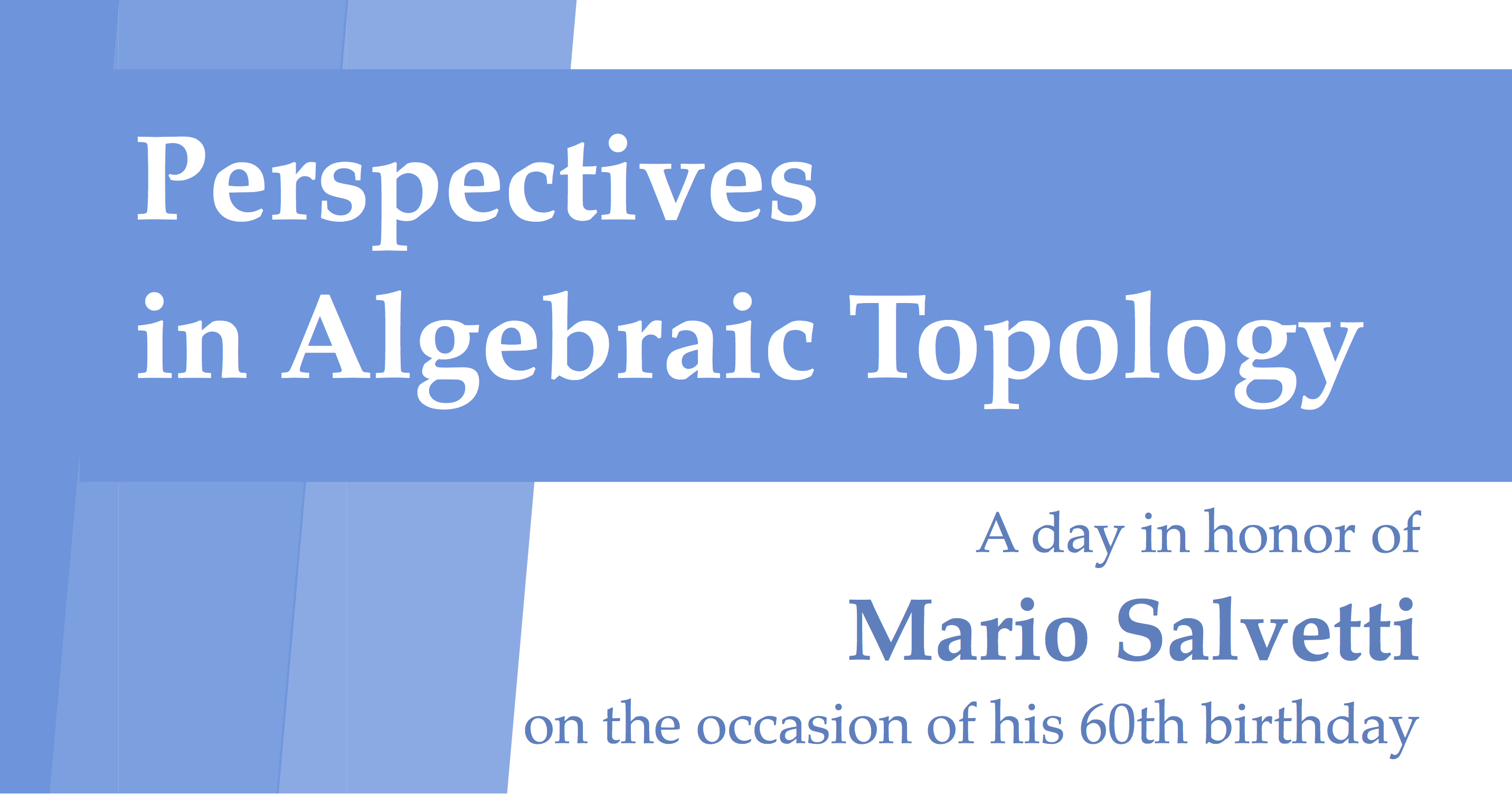
| Scientific program: | ||
| 10:00 | Welcome address (C. De Concini, Roma 1). | |
| 10:10 | Anders Björner (KTH Stockholm). | |
|
Around codimension one embeddings Abstract: Being drawable in the plane without intersecting edges is a very important and much studied graph property. Euler observed in 1752 that planarity implies a linear upper bound on the number of edges of a graph (which otherwise is quadratic in the number of vertices). Several ways of characterizing planar graphs have been given during the previous century. Planarity is, of course, a special case of a general notion of embedding a simplicial d-complex into real k-space. The k=d+1 and k=2d cases are of particular interest in higher dimensions, since they both generalize planarity. Embedding a space into some manifold is a much studied question in geometry/topology. For instance, van Kampen showed that in the k=2d case there is a very useful cohomological obstruction to embeddability. Higher-dimensional embeddability has been studied also from the combinatorial point of view, in a tradition inspired by Euler. In this talk I will survey a few topics from the combinatorial study of embeddings, such as bounds for the number of maximal faces and algorithmic questions. I will end with presenting some joint work with A. Goodarzi concerning a homological obstruction to k=d+1 embeddings and its enumerative consequences. The talk will not presuppose previous familiarity with the topic. |
||
| 11:10 | Coffee break. | |
| 11:30 | Hiroaki Terao (Hokkaido). | |
|
Reflection groups and free arrangements Abstract: Reflection groups give us arrangements of hyperplanes as collections of all reflecting hyperplanes. (The best-known example is a symmetric group giving us the braid arrangement.) Those arrangements are known to be free arrangements by K. Saito (1975). Free arrangements are, however, still mysterious. It has been observed that many arrangements somehow derived from reflection groups also turn out to be free. But we do not know the reasons behind this phenomena. In this talk, we will discuss what makes those arrangements free. |
||
| 16:00 | Coffee break | |
| 16:20 | Alexandru Dimca (Nice). | |
|
Computing the Milnor fiber monodromy of hyperplane arrangements Abstract: In this talk I will explain an effective method of computing the monodromy action on all the cohomology groups of a hyperplane arrangement. One of the main points is an old conjecture by H. Terao, known to be false for general singular hypersurfaces, but very likely true for the hyperplane arrangements. |
||
| 17:20 | Fabrizio Catanese (Bayreuth). | |
|
Rigid manifolds, projective classifying spaces and line and hyperplane arrangements.
Abstract: Many important questions in the theory of surfaces and in algebraic geometry have been solved thanks to explicit constructions of algebraic surfaces as abelian coverings branched over special configurations of lines, for instance the Hirzebruch-Kummer coverings branched on classical configurations (complete quadrangle, Fano, Hesse). I shall first describe general results, obtained with Ingrid Bauer, on rigid compact complex manifolds, and their Kodaira dimension. Then I shall concentrate on new examples, studied in my joint work with Ingrid Bauer and Michael Dettweiler, discussing new results and quite general open questions, concerning rigid compact complex manifolds, and projective classifying spaces. |
||
| 18:20 | Cocktail. |